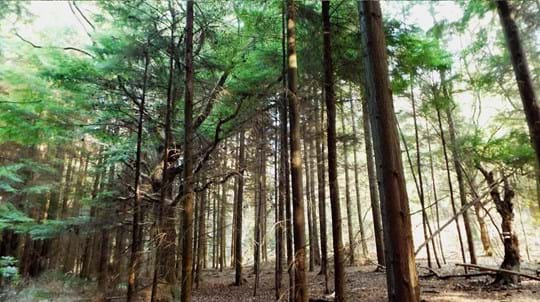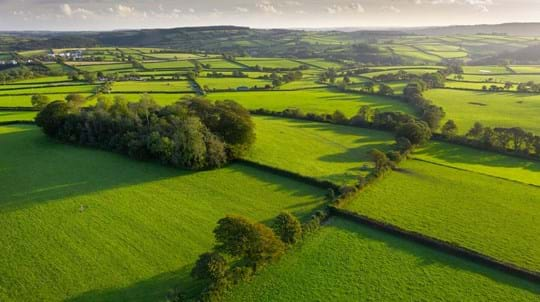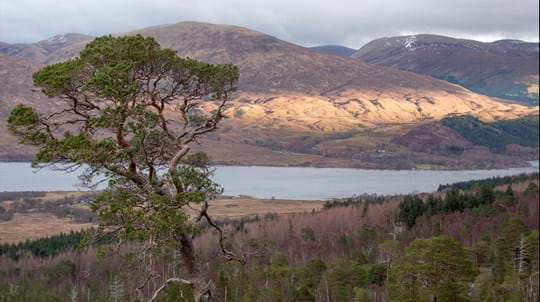Rainforest. The name conjures images of tangled jungle far from home. And yet, Europe has rainforest.
Temperate rainforest, once occurring along much of the continent's Atlantic coastline now survives in fragments in just a few isolated pockets. And it is in Scotland we find its largest remaining stronghold.
From hazel to oak, from birch to pine, Scotland's rainforest is a unique mosaic of woodland, glades, boulders, crags and river gorges.
High levels of rainfall and relatively mild year round temperatures provide just the right conditions for some of the world's rarest lichens, mosses, liverworts, fungi and ferns.
Scotland's rainforest is a special, precious place but it's in trouble and for local communities its demise is devastating.
"Well rhododendron is incredibly invasive. There's no question about it - the rainforests are seriously threatened by it. Really the only control that we have on them is us if we kill them, otherwise they just continue to invade."
"Deer are a natural part of the the woodland ecosystem - they're woodland animals and they perform a valuable function here but if we have them in too high densities they are browsing off more tree seedlings and saplings than can naturally replace themselves."
"It's been an important part of community life for such a long time and it's really part of our culture and our heritage. It's used for ecotourism, it's used for people's health and well-being, it's a very special part of our lives."
"The general naturalist is just blown away by the sheer variety of life here and it's something they won't get the opportunity to see elsewhere. The more rainforest that there is then the more opportunities for wildlife and wildlife-watching businesses."
"The woods here are really very valuable to to all the farms who are lucky enough to have them. It's not just a special place on its scientific merits, it's also a place that I use for the benefit of the farm. It would be a tragedy to to lose these these woodlands - they're just super special."
Only 30,000 hectares of Scotland's rainforest remains - a mere two percent of Scotland's woodland cover. Choked by rhododendron, unable to regenerate due to grazing pressure, crowded by exotic conifer plantations and exposed to ash dieback and nitrogen pollution, we face the very real risk of losing this globally important habitat completely and the longer we wait the harder it will become.
The Alliance for Scotland's Rainforest is a partnership of organizations with a shared vision to see the precious forest thrive once again, but we can't do this alone.
We need the support of funders and policy makers to save this valuable habitat which locks in carbon, provides local livelihoods and supports communities.
If we work together we can protect and restore it, but we must act now for the sake of Scotland's rainforest and all that depend on it.


















